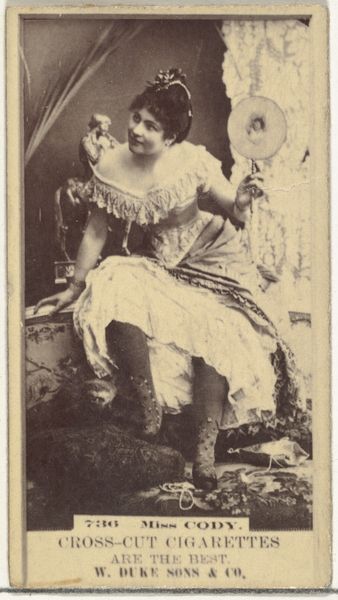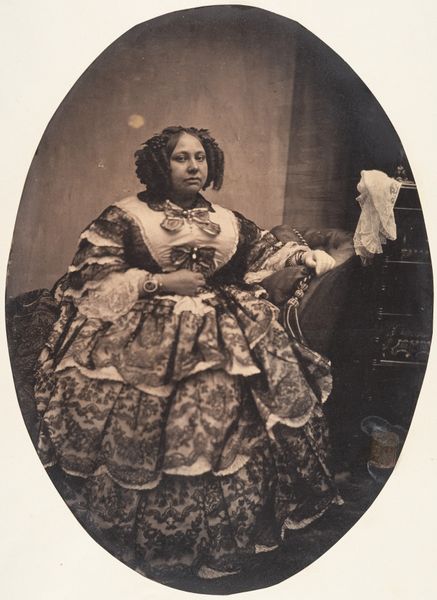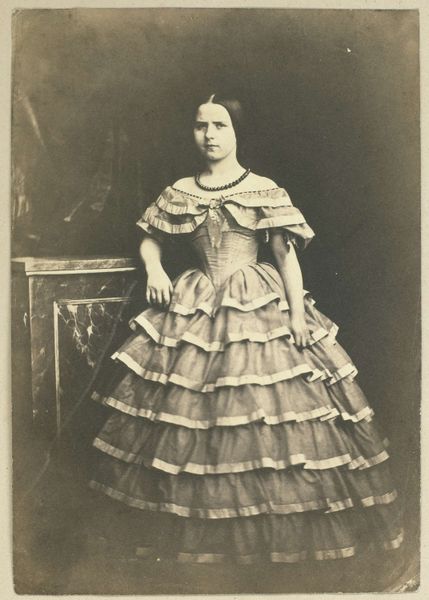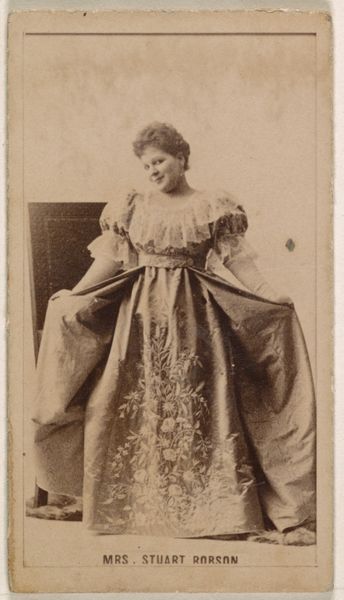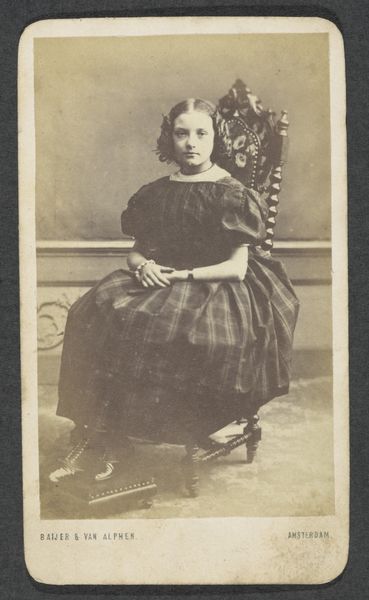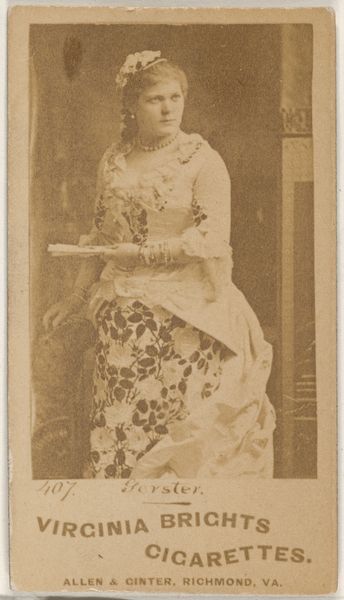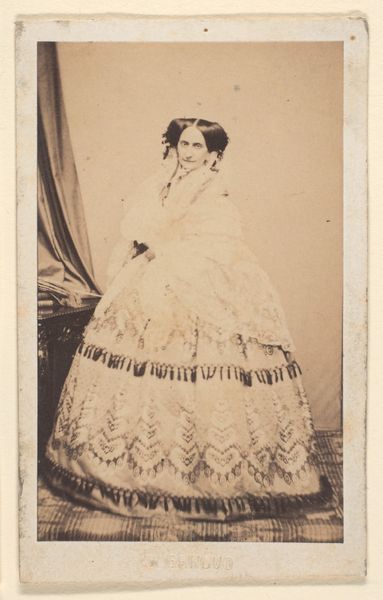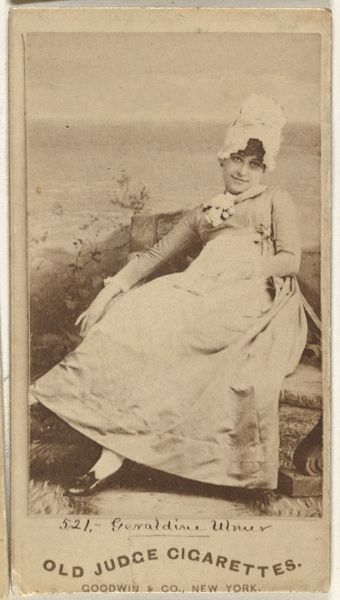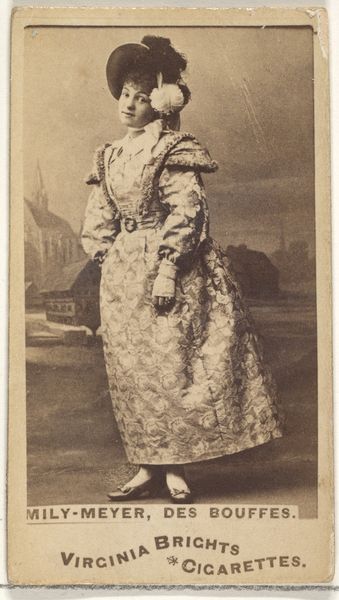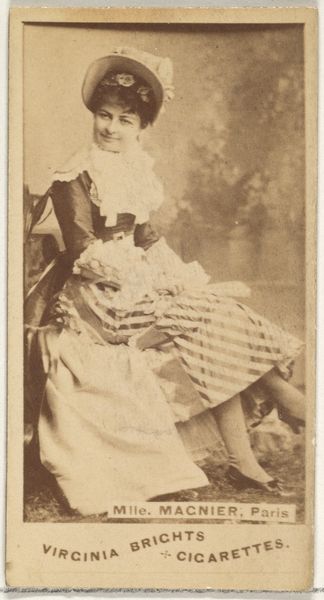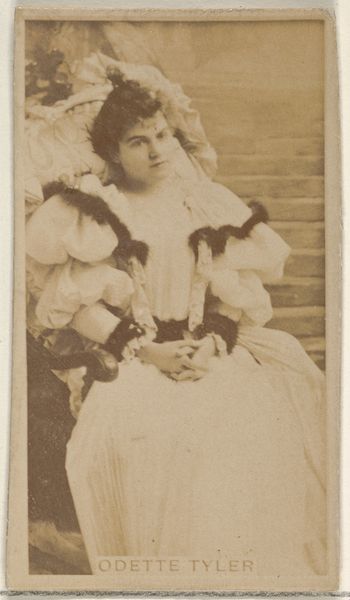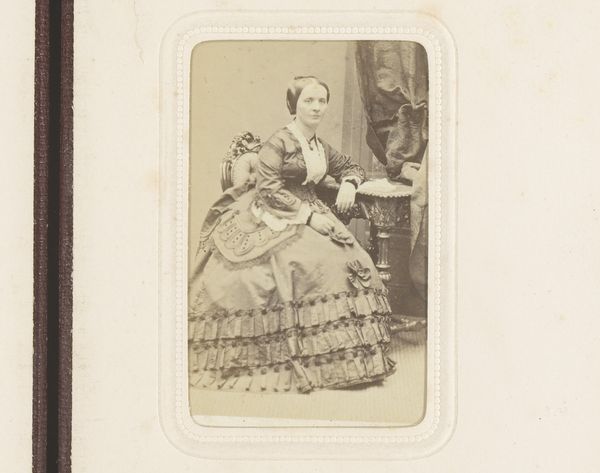
Dimensions: Image: 10 in. × 7 5/8 in. (25.4 × 19.3 cm) Sheet: 13 3/8 × 18 1/8 in. (34 × 46 cm)
Copyright: Public Domain
Curator: We are looking at a daguerreotype portrait entitled "Madame Gihoul" dating from 1854 to 1856, by Louis-Pierre-Théophile Dubois de Nehaut. It's part of the Metropolitan Museum of Art's collection. Editor: What immediately strikes me is the layering and excess of fabric in her dress. It's heavy and voluminous, almost obscuring her form, while its intricate design stands in stark contrast to her somewhat solemn expression. Curator: Yes, the dress certainly reflects the material culture of the time, doesn't it? Fashion dictated such elaborate styles, and a daguerreotype like this would have been a relatively expensive status symbol. It was a way to memorialize and project an image of respectability. The very act of commissioning a photograph spoke volumes. Editor: Precisely. Look at the surface, the sheen achieved by the daguerreotype process—it transforms mere fabric into something almost sculptural. This wasn’t just clothing; it’s carefully considered adornment signaling access to a complex network of textile production and consumption. How long do you think it took her to just get into that outfit? Curator: A fair point, and note too how the composition enhances this effect: observe how the inclusion of a framed portrait on the table alludes to familial connection and further reinforces Madame Gihoul's societal standing. She is, in effect, constructing a carefully mediated self-image. Editor: I also wonder about the labor involved in producing the daguerreotype itself. The preparation, the chemicals, the specialized knowledge—it's all integral to the final product. Even the length of exposure, requiring the subject to remain still, impacted the final composition. The social relations imbedded within these technical requirements make me think about how our perception of romantic era ideals needs reevaluation! Curator: Definitely, considering the socio-economic and political landscape deepens our understanding. This daguerreotype encapsulates not just individual likeness, but broader historical narratives around identity, class, and technological innovation. It allows a fascinating glimpse into the dynamics of the era. Editor: Seeing it through that lens makes you consider the layers of history. We get more than just an image, but insights into labor and commodity culture too!
Comments
No comments
Be the first to comment and join the conversation on the ultimate creative platform.
